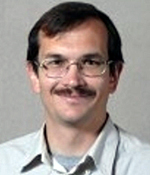Gruzdev Wins Competitive Newton Award
August 5, 2020


Vitaly Gruzdev
Research Associate Professor Vitaly Gruzdev was awarded a prestigious Newton Award from the Department of Defense. These awards were given out for transformative ideas during the Covid-19 pandemic. Only 13 awards were given from 548 applications, so congratulations to Vitaly!
Summary of the Research
Many breakthrough developments and groundbreaking applications could be achieved with devices that researchers have been striving towards for the last decade. For example:
- Table-top accelerators capable of delivering high-energy electrons and ions with controlled energy
- Unique lasers capable of producing single-cycle pulses with ultra-broad spectrum and central wavelength, tunable from near-infrared to far-infrared
Development of these and many other unique instruments are currently blocked by several fundamental challenges, for example, the absence of suitable laser materials.
To attack these challenges, we propose a novel approach based on the fundamental properties of free electrons generated by high-power femtosecond laser pulses in typical semiconductor crystals.
Under certain conditions, those electrons may experience very rare collisions and behave in a highly non-equilibrium way, similar to electrons of a quasi-non-collision gas plasma. Subjected to action of electromagnetic field, the free electrons of the crystal perform oscillations.
The objective of the awarded research is to theoretically study major properties of the oscillating free electrons with special emphasis on their optical response. Some anomalous behavior of the optical response is expected with a promise to pave a road towards development of new principles of coherent light amplification and new type of solid-state lasers.
Proposed technical approach includes:
- Derivation of kinetic equations for the oscillatingelectrons
- Derivation of analytical relations between optical response of the oscillating electrons of a crystal and parameters of pumping laser pulses.
Simulations of the electron dynamics and optical response will be performed based on that kinetic equation.
Anticipated outcomes include:
- Scaling of real and imaginary parts of the optical response with microscopic parameters of semiconductors and
- Parameters of pumping laser pulses (central wavelength, peak irradiance or fluence, pulse width).
That scaling paves a road to proof-of concept experiments by suggesting a window of pumping-laser and material parameters, and experimental conditions for reliable detection of the expected effects.
For more information:
